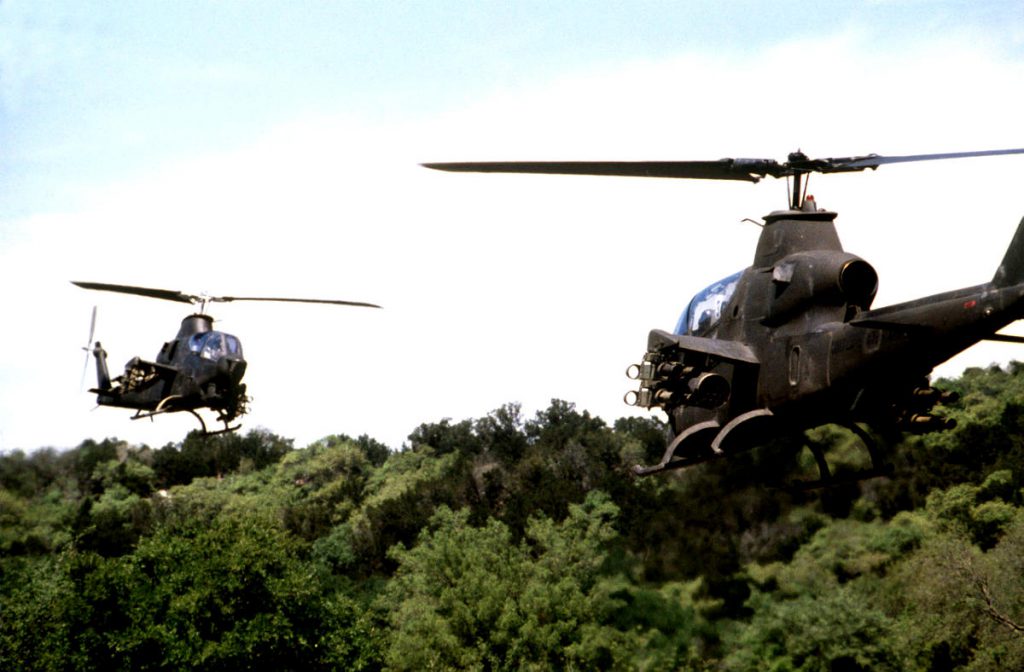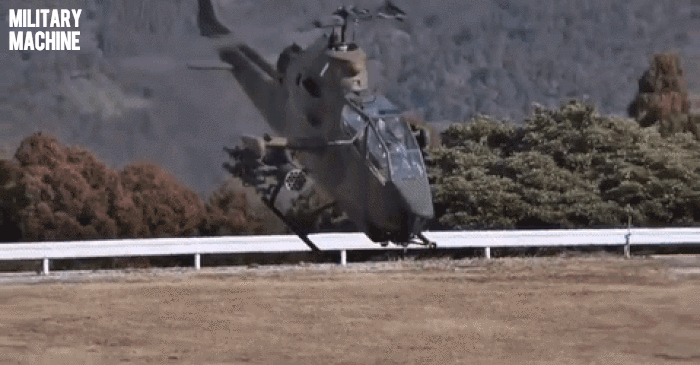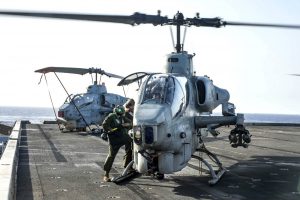The AH-1 Cobra By Bell Helicopter
Manufactured by Bell Helicopter, the AH-1 Cobra was developed in the 1960s as an armed compliment to the UH-1 Iroquois (affectionately known as the Huey). The Vietnam War saw the birth of air cavalry, as helicopter borne troops would fly across the country from battle to battle. As the use of air cavalry continued, it became clear that armed escorts were required for the troop transports.
First Blood:
Bell built off the Huey design and platform and, after several iterations of helicopter gunships, the AH-1 Cobra entered service in June of 1967, then called the HueyCobra. The single engine, twin blade attack helicopter aircraft served as the main attack helicopter for the US Army until it was replaced by the AH-64 Apache. However, updated versions continue to fly for other nations and in the United States Marine Corps.

Firepower:
Designed for both armed escort and direct attack missions, the AH-1 Cobra carried a variety of armaments. The original model either two 7.62mm multi-barrel mini guns, two 40mm M129 grenade launchers, or one of each. It also carried 70mm rockets in M158 or the M200 launcher, containing 7 or 19 rockets respectively. Modern versions carried the General Dynamics 20mm M197 Gatling cannon, 70mm Hydra rockets in either the 7 rocket M260 launcher or the 19 rocket M261 launcher, and 4 or 8 TOW missiles.
 Performance:
Performance:
The original AH-1 models carried a Lycoming T53-L-13 turboshaft engine, providing 1,100 shaft horsepower. This gave the Cobra a never exceed speed of 190 knots and a maximum speed of 149 knots. The AH-1 had a service ceiling of 11,400 feet and a rate of climb of 1,230 feet per minute. It’s fuel capacity gave it a range of 310 nautical miles.
Propulsion:
Modern versions have the Lycoming T53-L-703 engine, providing 1,800 shaft horsepower. This more powerful engine increased the Cobra’s Service ceiling to 12,200 feet and boosted the rate of climb to 1,620 feet per minute. It did not, however, increase the maximum speed and the never exceed speed fell to 170 knots. The modern AH-1 Cobra also has a slightly reduced range of 274 nautical miles.

Operational Use:
The AH-1 Cobra was originally developed as a member of the UH-1 Huey family and was known as the HueyCobra, which would later shorten to “Cobra”. The Cobra saw use during the 1968 Tet Offensive and continued to be used during the rest of the Vietnam War. Fitting its original design, it was used primarily as an armed escort for transport helicopters but was also paired with scout helicopters in a direct attack role.
In the 1980s AH-1 Cobras saw action during Operation Urgent Fury in Grenada where they flew close support and escort missions. During the Gulf War of the early 90s they served in a support role and dealt heavy damage to Iraqi armored units. They also provided support in Somalia during Operation Restore Hope and were used during the US invasion of Haiti in 1994.

Super Cobra:
While the US Army phased out the Cobras in the 1990s and fully retired them in 1999, The United States Marine Corps still uses a twin-engine model known as the Super Cobra. Army Cobra models are now used by the US Forest Service, who have nearly 30, and allied nations.
Use By Foreign Nations:
The Israeli Air Force used Cobras until 2013 when they retired their fleet of 33 due to budget cuts. They saw action in Lebanon during the 1982 war and have been used against Hezbollah throughout their tenure. After retiring their Cobras, Israel transferred approximately 16 of them to Jordan, adding to the 33 they had already purchased from the United States. Turkey purchased 42 Cobras and have used them in their longstanding conflict with the Kurds.

